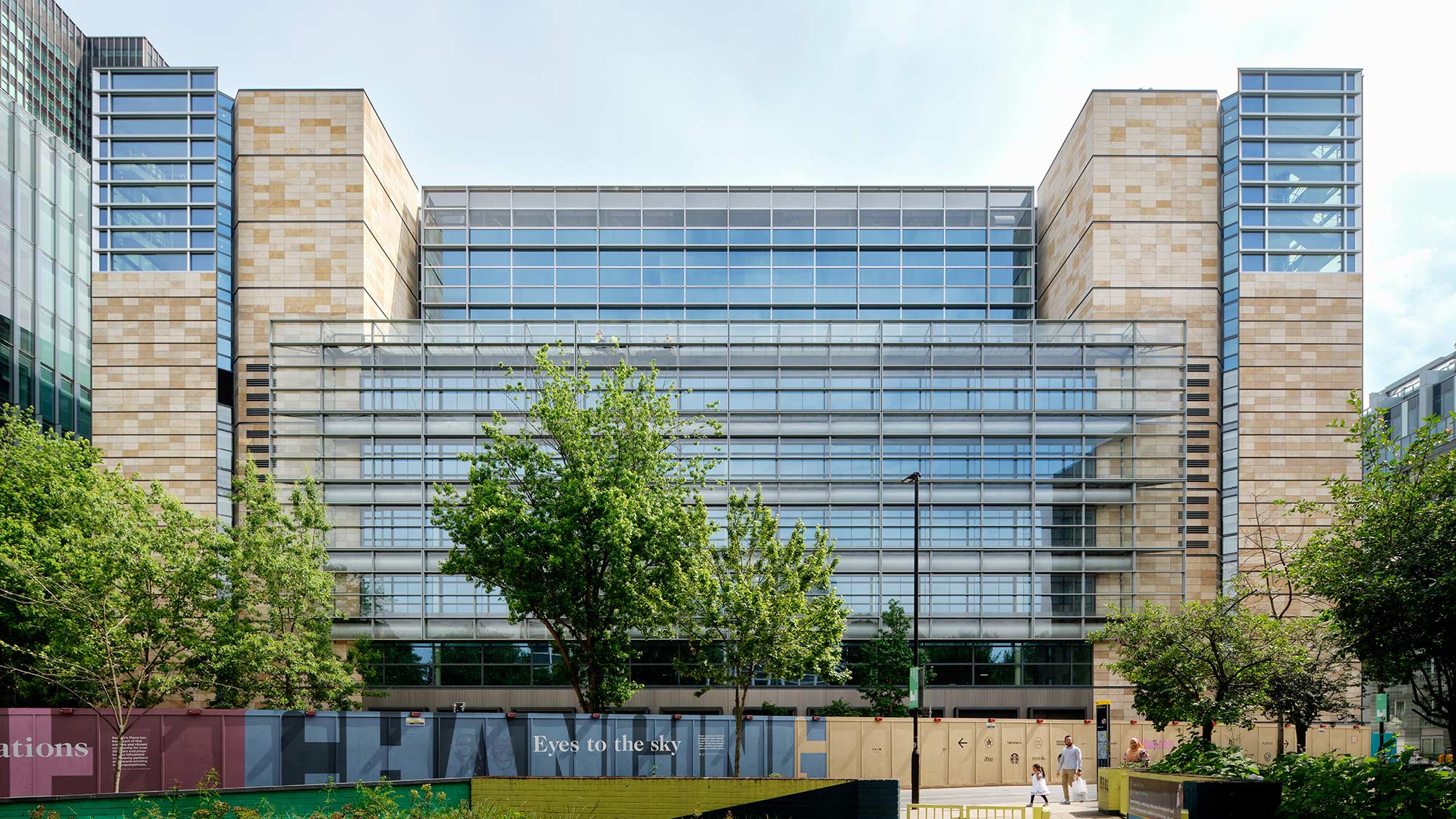The built environment is responsible for almost 40% of energy-related carbon emissions globally, making it a major contributor to climate change. Reducing its impact is vital in overcoming the climate emergency and in order to combat it we must find new ways to design and construct our cities.
At Arup, we see this pivotal moment as an opportunity to challenge the status quo. Our work on the recently completed 1 Triton Square in London demonstrates that refurbishment can be exciting, attractive and incredibly sustainable. It’s an example of our marginal gains approach whereby every possible system, component and strategy is analysed and refined to improve performance and deliver the most sustainable outcome.
Retain and reuse
1 Triton Square was originally designed by Arup for British Land in the 1990s – with future regeneration in mind. Twenty years later, with the needs of customers having evolved over time, British Land saw the potential to increase the building’s size and transform it for today’s workstyles – opting for refurbishment to save time, money and carbon.
For Team Triton, comprising client British Land, an all Arup design team, and contractor Lend Lease, it quickly became clear through the design process that there was an opportunity to deliver an incredibly sustainable outcome.
We asked ourselves, “How much can we retain and reuse?”. This philosophy would underpin everything the team did during this project.
Project Summary
48% reduction in carbon compared to a typical commercial building
40,000tonnescarbon saved
30%faster to completion vs typical new build
“ If we’re to combat the climate emergency, it’s essential that more clients adopt a radically different mindset like British Land. 1 Triton Square is ground-breaking because the whole team was willing to look at the world differently and collaborated to drive positive change. ”Nick Jackson Director
A 'marginal gains' revolution
Like Olympic athletes seeking major performance gains through small incremental improvements across every possible area, Team Triton chipped away at every aspect to save carbon, cut waste and deliver the best working environment possible.
Through this marginal gains approach, the team has refined and optimised dozens of systems, components and strategies to deliver a highly sustainable building.

Implementing circular principles
The project’s underlying philosophy of reuse aligns with Arup’s commitment to implementing circular economy principles in our work.
Our work on Triton’s façade represents one of the largest examples of circular economy practices in the industry to date. It required the removal, refurbishment and reinstallation of over 3,000m2 of façade, comprising over 25,000 separate parts. This approach alone saved over 2,400 tonnes of carbon and represented a 66% cost saving when compared to a new façade.
Collaboration is key
Implementing a truly successful refurbishment requires a radically different mindset from all those involved in a project. From the outset, British Land was prepared to adopt a different mindset by championing a progressive whole-life carbon strategy at 1 Triton Square.
“The redevelopment of 1 Triton Square has been significantly enhanced through Arup’s Total Architecture approach. The advantages of using a single designer across key professional disciplines are clear - shortened lines of communication ensure the team move seamlessly through the project at the same pace. More importantly however, is a single culture ensuring the team operate with a highly collaborative approach, and challenge one another’s ideas which is considered essential to achieving a successful outcome for the client. ” Development Director, British Land
Total architecture
1 Triton Square will become a healthy workplace for 3,500 people with exceptional amenity, daylight and social connectivity. The atrium and new structure has been designed to incorporate satellite atria, floor to ceiling windows fill offices and stairwells with natural daylight, nearly 500m2 of green roofs promote biodiversity, and five panoramic terraces provide space for socialising, working and relaxing.
Our architectural redevelopment of this 90s office building reimagines it into a 21st century workplace – flexible, healthy, and appropriate for today’s workstyles.
Along with three extra floors and twice as much net office area, the refurbished building re-establishes itself in its urban context, engaging with the street and local surroundings much more.
Discover more
-
Expertise
Architecture
For over fifty years Arup has operated an architecture practice, believing that architecture and engineering are best achieved in close collaboration, two parts of a seamless creative process.
-
Expertise
Building retrofit
Over 60 years, Arup has utilised its retrofit expertise on more than 10,000 projects globally to repair, reconstruct, refurbish, reconfigure, re-invigorate and restore buildings.
 ;
;







